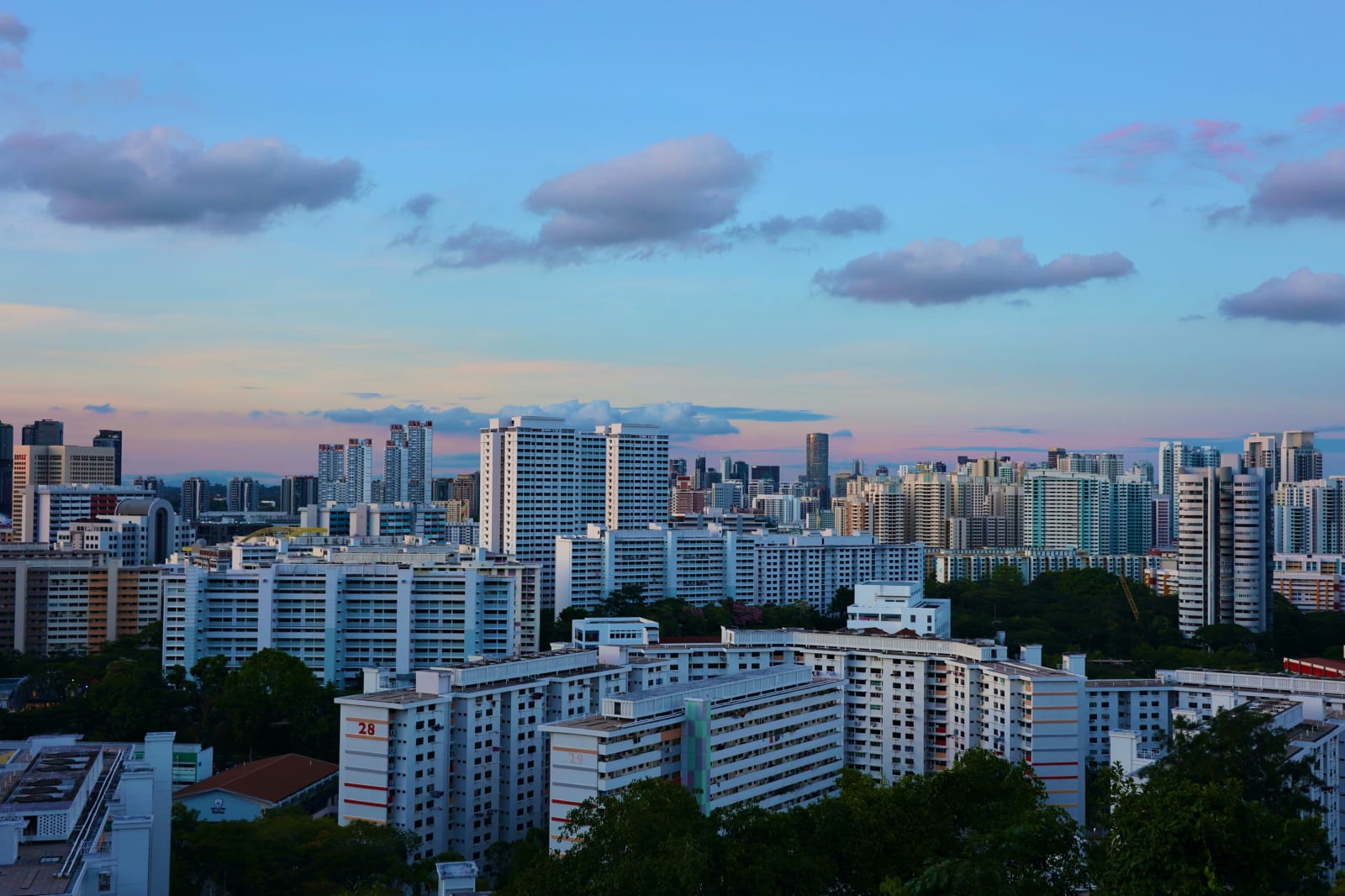Key Financial Trends of October 2023
Singapore’s Economic Growth Picked Up in Q3
Advance estimates placed economic growth for the third quarter at an increase of 0.7%, accelerating from the 0.5% expansion seen in the last quarter. On a seasonally adjusted basis, the economy grew by 1.0% in Q3, over Q2’s 0.1%. This was according to a recent statement by the Ministry of Trade and Industry (MTI).
This advance is in spite of a continued decline in Singapore’s key exports for the 12th straight month in a row. In September, non-oil domestic exports (NDOX) fell by 13.2%, moderating from a 22.5% decrease in August and a 20.3% fall in July.
Some sectors that did well include the construction sector, which grew by 6% year-on-year in the third quarter, following on from the 7.7% growth in the second quarter of the year. This was mainly supported by increases in construction output in both private and public sectors.
Additionally, accommodation and food, real estate, administrative and support services, and other services expanded by 4.7% in Q3, continuing the 6.1% growth seen in the previous quarter. In particular, the accommodation sector saw robust growth due to continued improvement in international arrivals.
Q3 advance estimates are computed based on the first two months of the quarter, and are intended as an early indicator of GDP growth. They are subject to revision when more data becomes available.
Related: Key Financial Trends of the Month (Sep 2023)
What this may mean for you
Naysayers have been calling for a recession since 2022, when the US Fed showed they were serious in raising interest rates to bring down inflation. After a prolonged period of continued rate hikes, and a war to boot, this much-talked-about recession is still nowhere to be seen.
The current consensus is calling for a soft landing in 2024, a view echoed by MIT, which also expects Singapore’s economy to see a stronger recovery next year. If these advance estimates hold true and the economy continues to strengthen in the final quarter of the year, we could finally be seeing some light at the end of the tunnel.

COE Premiums Hit New Highs Again
The road to car ownership continues to grow ever steeper in Singapore. COE premiums have once again hit new heights – this time, across all car categories. This could mean that there is little to no wiggle room left for those wanting to drive their own cars.
According to the latest set of COE bidding results on October 18, the quota premium for Cat A clocked in at a record S$106,000, slightly up from the S$104,000 seen in the last exercise.
Open category COEs – commonly used for larger cars – also saw an uptick in premiums from S$152,000 to a new record of S$158,004.
The largest increase was seen in Category B COEs, where premiums came in at S$150,001, up from S$146,002 in the previous bidding exercise. This marks an increase of nearly S$4,000 – and the first time the S$150,000 mark has been crossed.
COE premiums for motorcycles also saw an upward trend, rising to S$11,201 from S$10,856 in the last bidding exercise.
The only COE category that saw a dip was Cat C, which is for commercial vehicles including buses and goods vehicles. Premiums fell slightly to S$84,790 from S$85,900 previously.
Related: Car Subscription Or Car Ownership: Which One Will Save You Money?
What this may mean for you
Perhaps in response to the new all-time highs, the LTA has announced an increase in the number of COEs moving forward. For the quarter starting November, COEs will increase by 13% overall.
This will bring the number of COEs to 12,774 for the quarter, with the largest increases in Cat A and C. LTA also plans to continue increasing the number of COEs throughout 2024.
While these measures are heartening to see, it is doubtful COE prices will see meaningful downwards adjustments anytime soon. Rather, the most likely scenario is for COE premiums to hold stable – a difficult task given the inexorable increase in private cars being used for ride-hailing services.
In any case, those needing a car should consider alternatives such as car-sharing or car-pooling. Another strategy that might help is to put down a higher downpayment so you pay less total interest on your car loan.

Proposed New HDB Classification See Homeowners Asking for Higher Prices
Some enterprising homeowners are capitalising on the introduction of a new public housing classification model to ask for higher selling prices.
As you may be aware, the government is overhauling the HDB classification system. Instead of mature and non-mature categories, new HDB flats will be sorted into Standard, Plus or Prime categories.
Plus and Prime flats come with stricter rules, including a longer 10-year minimum occupation period (MOP), and a clawback of subsidies and grants upon resale. This is to reduce speculation in such flats, which will occupy more premium locations and be sold with higher subsidies.
Related: National Day Rally 2023 Highlights – A Rundown of All The New Policies That Will Affect You
What this may mean for you
Owners of HDB flats located in proposed Plus zones are taking the opportunity to ask for higher selling prices.
The purported advantages include being able to avoid the longer 10-year MOP and subsidy clawback, while being able to own a flat that is deemed more valuable than a Standard flat.
While it remains to be seen how these supposed benefits will play out in reality, those looking to purchase a resale flat may likely have to grapple with higher prices as an unintended consequence.
It is important to make a thorough assessment as to whether the higher price is indeed worth it, especially if you’re looking for a property to stay in rather than as an investment.
Find the Cheapest Home Loans in Singapore

US Fed Chief Not Satisfied With Inflation Levels, May Continue to Raise Interest Rates
And finally, Federal Reserve Chairman Jerome Powell has expressed dissatisfaction with the current levels of inflation in the US, leaving open the possibility for more rate hikes – a scenario that is sure to send chills throughout the market.
While the Federal Reserve has paused its rate hike campaign for now, Powell stated that additional signs of “persistently above-trend growth”, or a reversal of the recent decline in job openings and softening of wage growth, could cause the Fed to reconsider its position.
At present, the benchmark lending rate is at a 22-year high of 5.5%.
Related: 5 Causes of Inflation & How They Affect Forex Rates
What this may mean for you
As the world’s largest economy, US interest rate changes will inevitably have a ripple effect on other economies. Given our open economy that is highly reliant on worldwide factors, Singapore is no exception.
Should Chairman Powell decide to push interest rates higher, home loans could get more expensive here in Singapore. This will translate to increased housing costs and continue to keep rental rates high.
Additionally, news – or even anticipation – of further rate hikes could create more market volatility, which means investors may be faced with a more challenging time. It is critical to evaluate your holdings in a calm and rational manner, practice diversification to hedge against risk, and try not to let short-term turmoil detract you from your long-term goals.
Read More:
- How To Invest & Buy Insurance Without Sacrificing Your Starbucks Coffee Or Mala Hotpot
- Beginner’s Guide to Investing in Commodities
- How to Rebalance Your Portfolio When S-REITs are Going Through Turbulence
- Ways to Invest in Property in Singapore – Without buying one
- Guide to Spotting and Buying Undervalued Stocks


